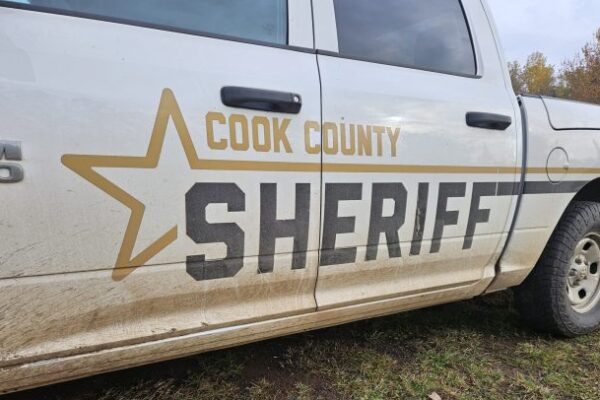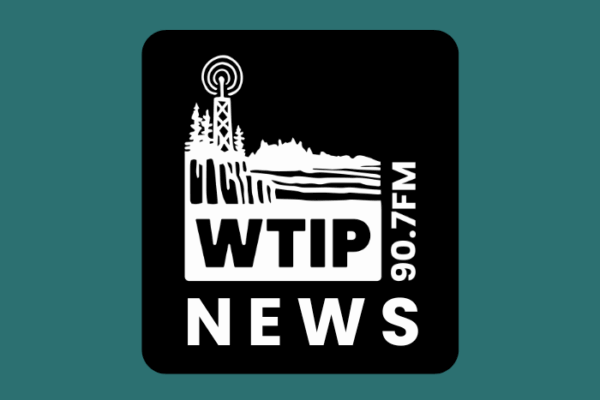Grand Portage Band and MnDOT unveil dual language river signs on Highway 61
The Grand Portage Band of Lake Superior Chippewa, the Minnesota Department of Transportation, The Stonebridge Drum Group, and the public gathered on Thursday, May 16, at Manidoo-bimaadagaakowinii-ziibi (Devil Track River), east of Grand Marais, to unveil a new dual language river sign along Hwy 61.
“What we’re doing today is significant,” April McCormick, Grand Portage Tribal Council secretary and treasurer, said at the ceremony. “And there’s many reasons for that significance.”
Installing dual language signs along Hwy 61 and throughout the 1854 Ceded Territory Lands of northeastern Minnesota is part of the Grand Portage Band’s initiative to revitalize the Ojibwe language. The Grand Portage Band worked closely throughout the last year with the Minnesota Department of Transportation (MnDOT) to design and install dual language signs along the North Shore corridor from Grand Marais to the Canadian border.
The signs will mark Manidoobimaadagaakowinii (Devil Track), Gaa-bibigwewanashkokaag (Flute Reed), Wiisaakode (Brule), Mashkiigwagamaa (Reservation) and Omiimii (Pigeon) rivers and the Grand Portage Reservation boundary.
Most recently, the Grand Portage Band worked alongside the Cook County Highway Department to install seven dual-language river crossing signs stretching from Tofte to Grand Portage. The new signs are in English and Ojibwe and installed at Temperance River, Cascade River, Little Devil Track River, Grand Portage Creek, N. Brule River, S. Brule River, and Portage Brook.
“Many of us may or may not have been taught our language. And I think that this is part of why we’re here celebrating,” McCormick said. “There’s a lot that can be brought forward in learning this part of our history in place names.”
During the Thursday, May 16 ceremonial event, the Stonebridge Drum Group played, and in addition to McCormick, MnDOT commissioner Nancy Daubenberger and Erik Redix, the Ojibwe and environmental education coordinator for the Grand Portage Band, spoke.
“This achievement highlights the positive relationship between MnDOT, especially our district, and tribal officials from the Grand Portage Band,” Daubenberger said during the ceremony. “Thank you for your continued trust in the development of the Ojibwe and tribal boundary signs. Let’s celebrate together this successful government-to-government partnership.”
In Nov. of 2021, Grand Portage Tribal Council members and MnDOT officials installed the first of 12 1854 Treaty boundary signs in the state of Minnesota.




WTIP spoke with Redix before the Thursday, May 16, ceremonial event to learn more about the significance and meaning behind each dual language sign. Video and audio from the full interview and audio of the feature produced by WTIP’s Chuck Olsen and ‘s M Baxley of the ceremonial event is below.














